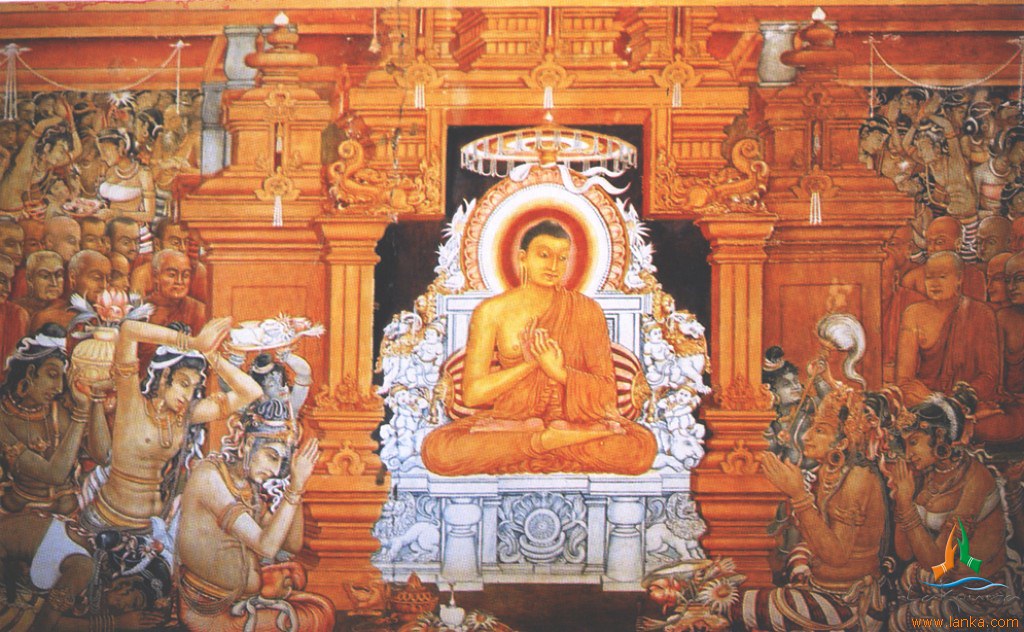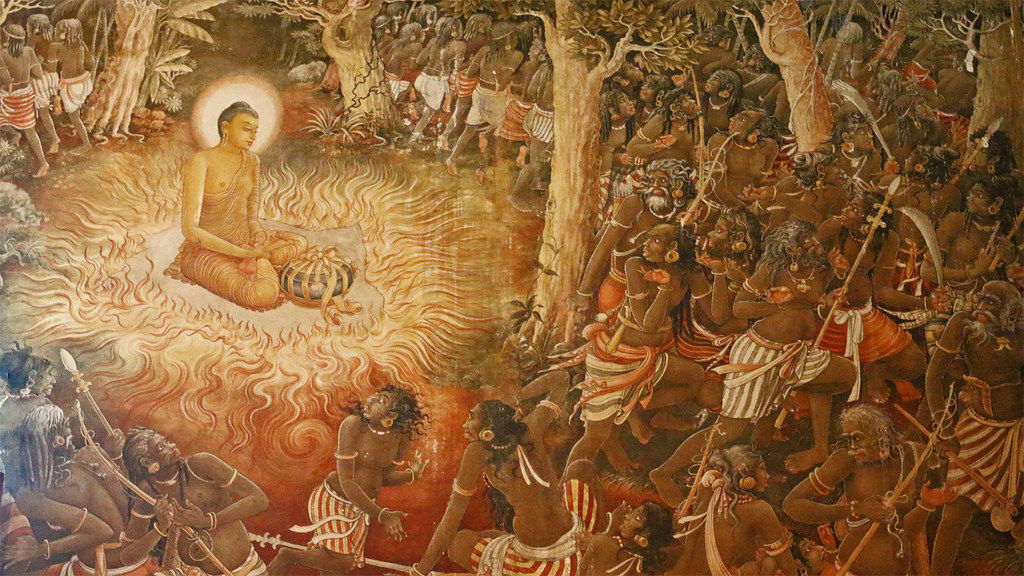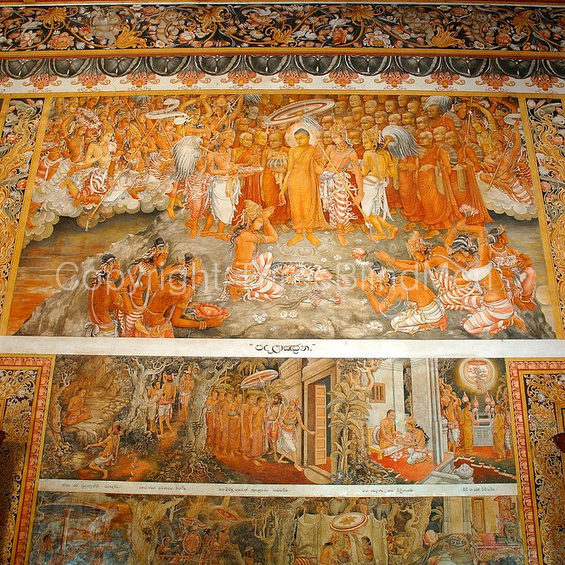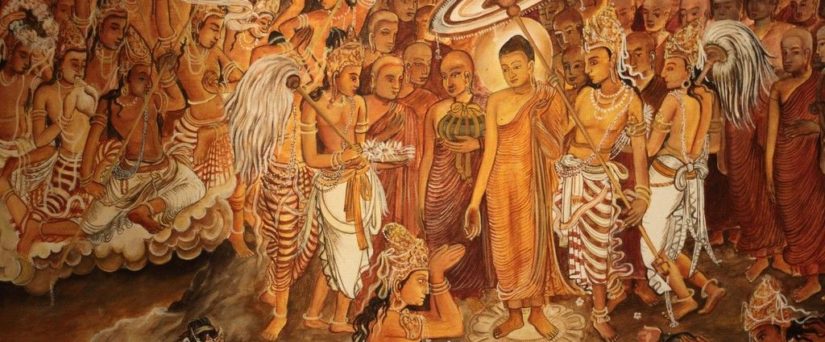From ancient times the tradition has been to paint the walls of temples with portrayals of the Jataka stories, but Kelani Vihara has made a welcome departure from this custom in its new paintings. Instead it has infused variety into the murals by introducing spectrums depicting an array of historical scenes connected with the birth, rise and progress of Buddhism in Sri Lanka. This departure is clearly seen when you enter the new wing of the Vihara.
As you step into the main shrine room through the main entrance to it, straight in front you see the golden gilt samadhi statue of the Buddha, set on a square plinth. Behind it is the arresting scenery of the Himalayan Range. Right above the main doorway leading into this chamber, on the wall is a fresco representing the birth of the Sinhala nation. Here you find the Buddha, in the day of his death, directing Sakra, the king of gods to take over the guardianship of Sri Lanka and protect Vijaya and his band of followers. The picture facing it on the right end of the opposite wall is that of Prince Vijaya and his followers landing in Sri Lanka.

The next is a painting depicting King Devanampiya Tissa presenting the Mahamegha park to Arahat Mahinda. Here the king himself is seen, marking the boundaries with a silver plough drawn by two elephants. The next is a depiction of Buddhagosha committing the Thripitaka into books at Aluwihare. This was the first time in history that the teaching of the Buddha was set down in writing.
Four other significant scenes in this portion, are Buddhagosas’ presentation of the Visuddimagga, written by him, to the Sangharaja of Maha Vihara at Anuradhapura, King Kirthi Sri conferring the title of Sangharaja to Weliwita Saranankara Maha Thera by presenting to him the ivory fan as the emblem of office, the bringing of the Bo-Tree by Theri Sangamitta and the Tooth Relic by Prince Danta and Princess Hemamala, hiding it in the folds of her hair.
In this section Sinhala designs and patterns run here and there on the pillars. Carved garlands of flowers finely executed in sculptural work curtain off the inner chamber.

The paintings in the new outer chamber of the left wing are charming and inspiring. These breath-taking pictures record important events in the history of Buddhism in Sri Lanka and the history of Kelaniya, in particular.
The paintings in the upper strip of panels portray the Buddha’s three visits to Sri Lanka. In the lower strip are frescoes depicting the events that led to the murder of the Maha Thera of Kelaniya, the consequent floods and the sacrifice of Princess Devi during the reign of Kelanitissa.
The other notable murals are those showing the institution of Theravada tradition of ordination on the Burmese monks and the looting and destruction caused to Kelani Vihara by Magha in early 13th century and by Portuguese in late 16th century.

